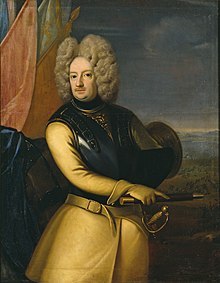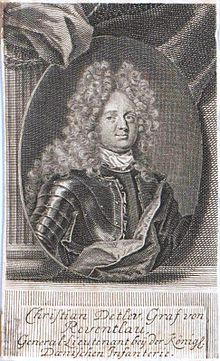Cremation of Altona
1st phase: Swedish dominance (1700–1709)
Riga I • Jungfernhof • Varja • Pühhajoggi • Narva • Pechora • Düna • Rauge • Erastfer • Hummelshof • Embach • Tartu • Narva II • Wesenberg I • Wesenberg II
Arkhangelsk • Lake Ladoga • Nöteborg • Nyenschanz • Neva • Systerbäck • Petersburg • Vyborg I • Porvoo • Neva II • Koporje II • Kolkanpää
Vilnius • Salads • Jacobstadt • Walled Courtyard • Mitau • Grodno I • Olkieniki • Nyaswisch • Klezk • Ljachavichy
Klissow • Pułtusk • Thorn • Lemberg • Warsaw • Posen • Punitz • Tillendorf • Rakowitz • Praga • Fraustadt • Kalisch
Grodno II • Golovchin • Moljatitschi • Rajowka • Lesnaja • Desna • Baturyn • Koniecpol • Weprik • Opischnja • Krasnokutsk • Sokolki • Poltava I • Poltava II
2nd phase: Sweden on the defensive (1710–1721)
Riga II • Vyborg II • Pernau • Kexholm • Reval • Hogland • Pälkäne • Storkyro • Nyslott • Hanko
Helsingborg • Køge Bay • Gulf of Bothnia • Frederikshald I • Dynekilen Fjord • Gothenburg I • Strömstad • Trondheim • Frederikshald II • Marstrand • Ösel • Gothenburg II • Södra Stäket • Grönham • Sundsvall
Elbing • Wismar I • Lübow • Stralsund I • Greifswalder Bodden I • Stade • Rügen • Gadebusch • Altona • Tönning II • Stettin • Fehmarn • Wismar II • Stralsund II • Jasmund • Peenemünde • Greifswalder Bodden II • Stresow
The cremation of Altona (also known as the Swedish fire of 1713 ) was a siege and planned burning of the Holstein city of Altona by the Swedish general Count Magnus Stenbock and his troops. It took place on January 9th . / January 20, 1713 greg. held during the Great Northern War .
prehistory
The Swedish crown's sphere of influence had shrunk considerably in the southern Baltic region . After the successes of the Russians and Saxons in the Baltic States and Pomerania , they moved further and further west. The Swedish fortress Stralsund was besieged as early as 1711-12, this siege only had to be broken off due to a lack of ammunition. The Swedish government dispatched Count Stenbock with 10,000 men at the beginning of September 1712 to strengthen the Swedish garrison in Stralsund and to supply it with supplies. In addition, Stenbock was supposed to involve the attackers in a field battle and defeat them.
The allies Russians, Saxony and Denmark planned the complete conquest of Swedish Western Pomerania in 1712. For this purpose, the Saxon and Russian armies wanted to unite with the Danish army near the Hanseatic city of Wismar and take action against the Swedes.
Stenbock sensed this step and led his army, consisting of 14,000 infantry and cavalry , between the armies and attacked the Saxons and Danes. Favored by the fact that the Russian army did not arrive on the battlefield quickly enough, the Swedish general won the last great victory for his kingdom in the Northern War. At the Battle of Gadebusch he defeated 18,500 Danish and Saxon soldiers and then retreated towards Holstein . Here he hoped to strengthen himself with fresh strength and to overtake and destroy the Danes who had left the battlefield to the west.
When Count Stenbock heard of the siege of Stade and its outcome from General Mauritz Vellingk , he angered the way in which the Swedish garrison was abandoned by the sovereigns. Vellingk did not tell Stenbock the whole truth about the siege and its outcome and asked Stenbock to burn Altona down in retaliation. Vellingk meanwhile claimed that the city and its residents had actively supported the Danish troops. This claim has never been confirmed.
The negotiations

The siege of the city began on January 7, 1713. This had no military presence within the walls, which could defend the inhabitants and their belongings. Only an old wooden gate and an already sunken moat surrounded the city.
That evening, Colonel Ulrich Karl von Bassewitz rode into town with a detachment of dragoons to warn the residents of the impending arson. He told the councilors that the only way to avoid this disaster was to pay General Stenbock compensation for the loss of Stade. Bassewitz announced the arrival of the general on the following day and asked the city officials to get on their way as quickly as possible to get the necessary money into their possession.
That same evening, a small part of the city caught fire. A division of riders under the command of the Swedish Colonel Strömberg helped to extinguish the fire as best they could. These riders also spent the night in the city and requested accommodation for themselves and their 800 horses, as well as beer, brandy and food.
The next day, Stenbock arrived in Altona at 8 a.m. He drove into town in a carriage drawn by six black horses, accompanied by an escort rider in front of and behind the Kunsche. In front of the town hall he was received by the provost Sass and he recommended the location of the city to him. Altona has not yet recovered from the great city fire in 1711 and the plague , and one also suffered from the war payments to the Holstein authorities. Stenbock listened to the provost with interest and finally asked him urgently about the alleged bread store for the Danish army, which, according to General Vellingk, should be in the city. The provost declared that there was no such magazine in Altona and that Vellingk was lying. Thereupon the general went to the premises provided for him in the town hall and was entertained extensively. Then he had the city representatives called and demanded 100,000 rich dollars from them, otherwise he would burn the city down. When they couldn't make the payment, he arrested them.
Some time later, Colonel Bassewitz was ordered to join the arrestees. They offered him 24,000 thalers and 36,000 thalers a short time later. This sum was far too little for Stenbock. They justified the small amount by saying that they had little cash in the city. Most of the money would be in Hamburg banks.
Shortly after lunch the general went to Hamburg with a small retinue . Actually, a representative of the city should also be able to come along to bring bills of exchange and guarantees from Hamburg for the good of the city of Altona. Stenbock, however, prohibited this.
When Stenbock returned from Hamburg in the evening, he again summoned the representatives to himself. When they ran out of money again, he was very angry. General Vellingk had told him in Hamburg that he had been offered 200,000 Reichstaler protection money to prevent the cremation. Again, this was a lie by Vellingk, who only wanted to take revenge on the residents of Altona.
When Stenbock realized that he was not getting any further with his strategy and that the citizens of the city could not actually raise more money, he reduced his demand to 50,000 Reichstaler. He sent Colonel Bassewitz to the city officials to collect this sum of money. They promised to get the money by the next noon, but this was not enough for the general and he gave the order to burn down the city.
He let all the town bells ring and gave the residents a few hours to get to safety.
The fire
General Stenbock assigned Colonel Strömberg with the task. Around midnight the city was set on fire. The soldiers went from house to house and set fire to them with pitch wreaths and torches. The brewery servants from the Bossener brewery had gathered in the Breite Strasse. They beat the Swedish soldiers to death who came to the alley to pillage and thus saved their brewery from destruction.
The residents of the city rescued themselves on the Hamburger Berg and endured in the freezing cold under the open sky or in dug sand pits. There are also reports from residents who requested admission to the Hanseatic city of Hamburg and did not receive it despite the icy January cold. General Vellingk was governor of the city at that time and did not tolerate any cooperation with the residents of Altona.
The next morning almost all of the houses had burned down. 959 houses and 274 stalls fell victim to the conflagration. Only the three churches and about 30 houses were spared.
The consequences
When the scale of this action became known, many European rulers condemned this type of warfare. Even the Swedish King Charles XII. is said to have expressed disapproval of this burn-down carried out by Stenbock. In a letter to the king, he justified himself for having acted only on the direct orders of General Vellingk.
The Saxon General Field Marshal Flemming called the cremation of Altona a violation of international law . No army has the right to burn down an open and unarmed place.
The Swedish general later regretted and regretted the burn down. He wrote that from that day onwards the misfortune clung to him and that he had no more happy day.
On March 16, 1713, the Danish King Frederick IV appointed Count Christian Detlev von Reventlow as the city's chief president. On March 18, he was given a royal decree to rebuild the city. Reventlow was nicknamed the founder of Altona .
As early as April 1713, the first 100 houses - all of stone - began to be built; at the same time, a court, prison and an " excise office" (taxpaying office) were rebuilt. In February 1714, the chief president dismissed the previous members of the magistrate "for incompetence, corruption and drunkenness" (and did not appoint a mayor until his own resignation); In the same year, the jetty on the Elbe was rebuilt, the town hall and fish market expanded in 1715 and construction of the town hall designed by Stallknecht in the Baroque style began in 1716 (completed in 1721). In 1717, Reventlow had four rows of linden trees planted on Altona's former and present boulevard, the Palmaille , which had meanwhile been completely run down and was only used by Reepschläger to twist ropes , in order to create a "public avenue". As a result of this and the measures mentioned below, Altona, which was largely destroyed, already had as many residents as before the two fires in 1720.
Individual evidence
- ↑ Lundblad p. 274
- ^ WC Praetorius p. 34
- ↑ a b W. C. Praetorius p. 35
- ↑ Voltaire p. 325
- ↑ a b Britta Scholz p. 8
- ^ WC Praetorius p. 36
literature
- von Voltaire: History of Carl XII. , Frankfurt am Main, 1761
- Britta Scholz: The Christianeum in Altona 1730–1773 , Norderstedt, 2008, ISBN 978-3-8370-2736-5
- Knut Lundblad: History of Charles the Twelfth, King of Sweden , Volume 2. Hamburg 1840
- WC Praetorius: Description of the royal. Danish freyen border and trading town ALTONA Volume 1, Hamburg, 1792
- Knut Lundblad: History of Charles the Twelfth King of Sweden Volume 1, Hamburg 1835

